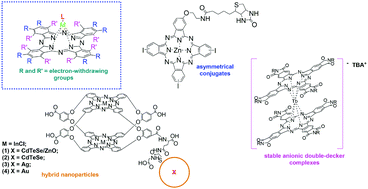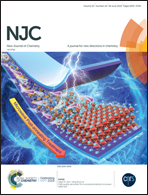Recent advances in chemistry of phthalocyanines bearing electron-withdrawing halogen, nitro and N-substituted imide functional groups and prospects for their practical application
Abstract
Herein, we present an overview of the approaches for the synthesis of phthalocyanines bearing electron-withdrawing halogen-, nitro- and N-substituted imide functional groups in different positions of the phthalocyanine macrocycle. Some approaches for synthesis of the corresponding substituted phthalonitriles are also covered. This review includes unusual techniques for the synthesis of phthalocyanines, such as microwave-assisted approaches, synthesis in ionic liquids and synthesis under mild conditions based on the double-addition of oximes. The synthesis and optical and magnetic peculiarities of the surprisingly stable anionic forms of double-decker phthalocyanine complexes with electron-withdrawing substituents are also highlighted. Finally, the various applications of phthalocyanines with electron-withdrawing functional groups (optical limiters, gas sensors, organic thin-film transistors, memory elements, single-molecule magnets, and medicinal chemistry) and the preparation of hybrid nanoparticles coated with a phthalocyanine shell are discussed.

- This article is part of the themed collection: 2019 Focus and Perspective articles


 Please wait while we load your content...
Please wait while we load your content...